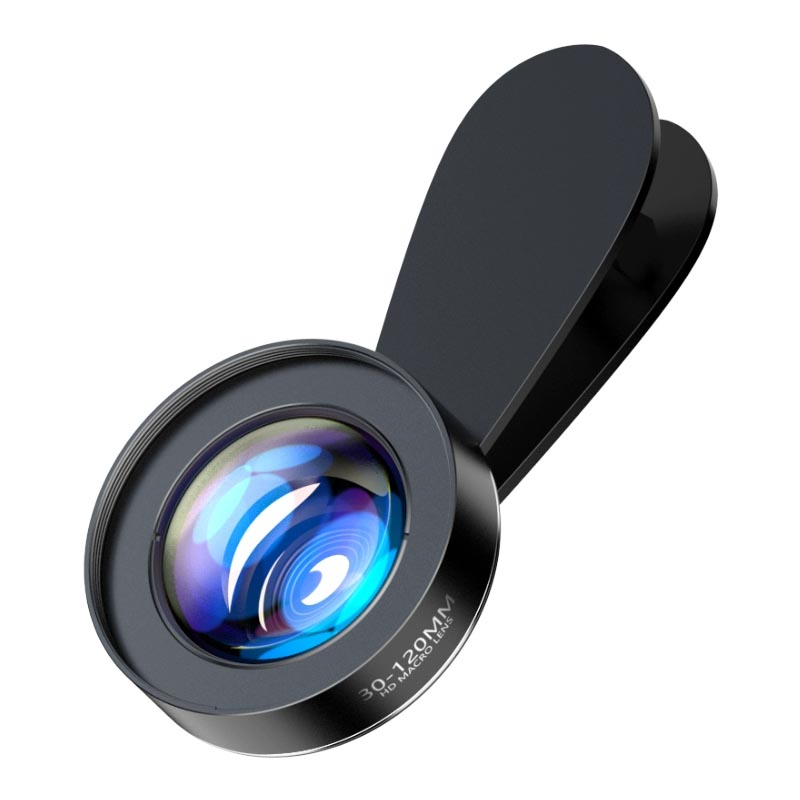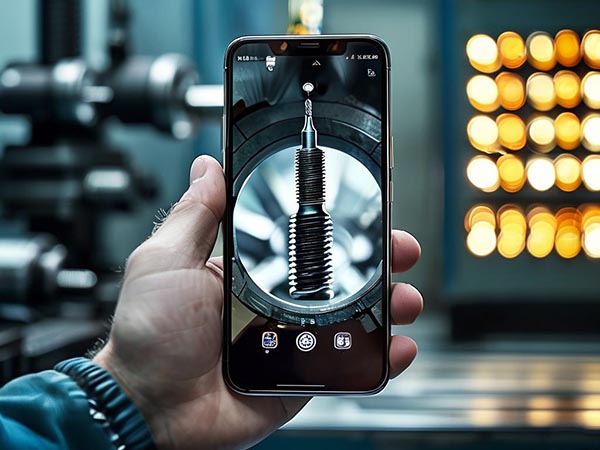Practical Guide to Tool Quality Inspection Using Smartphone + Macro Lens
In the cutting tool export industry, a barely visible 0.1mm chip can trigger full-container returns, while traditional inspection equipment often requires investments of hundreds of thousands of RMB—out of reach for small and medium-sized factories. According to industry statistics, 78% of foreign trade quality disputes stem from microscopic defects, highlighting the growing contradiction between the high cost and low usage rates of professional equipment. Facing the near-obsessive inspection standards of European and American clients, a hardware factory in Dongguan pioneered a different approach: combining a smartphone with a macro lens costing less than RMB 100. This setup enabled mobile quality inspection at critical areas like drill cutting edges and tap threads, reducing the per-piece inspection cost to under RMB 1 and lowering the defect miss rate by 66%. This "microscope revolution" born from the production floor is redefining the quality control logic for small and medium-sized manufacturers.

Why Traditional Quality Inspections Fail in International Orders
Scenario-Based Pain Point Analysis
- Case 1: Taps Rejected by an Italian Client
- Issue: 0.05mm chipping at the thread root (invisible to the naked eye)
- Loss: Full-container return plus air freight resupply cost totaling RMB 230,000
- Case 2: Mysterious Complaint from a Korean Client
- Truth: Burrs inside the microchannels of internal coolant drills (only visible under 50x magnification)
- Industry Data:
- 78% of foreign trade quality disputes are due to microscopic defects (Source: China Hardware Products Association, 2023)
- Daily usage rate of professional inspection equipment is below 15% (common across small and medium-sized factories)
What Types of Tool Defects Can Smartphones Detect?
- Tiny Chipping Invisible to the Naked Eye:
Especially at critical blind spots such as drill edges and tap thread roots.
- Coating Inconsistencies:
Issues like missed sprays or clumping, similar to uneven sunscreen spray applications.
- Burrs from Machining:
Commonly found around coolant hole edges in internal coolant drills.
How to Build a Mobile Inspection System for Under RMB 300
| Equipment | Recommended Model | Price Range | Key Specs |
|---|
| Macro Lens | Sirui AM-24 | ¥69-99 | 15mm working distance / 25x optical magnification |
| Lighting Device | Ulanzi VL49 Bi-Color Light | ¥129 | 360° adjustable brightness / 5600K color temperature |
| Mount Stand | Ulanzi F38 Quick Release Kit | ¥89 | Magnetic base + universal adjustment arm |
Pitfall Alerts:
- Beware of "1000x magnification" false advertising (true effective magnification rarely exceeds 100x).
- Lenses with integrated measurement scales are three times more practical than simple magnifying lenses.
3 Key Tips to Avoid Common Mistakes
- Choose the Right Lens:
Opt for metal-bodied lenses; plastic ones blur after a month of use.
- Regularly Recalibrate Focus:
Weekly focus checks using calibration charts printed on A4 paper.
- Establish a Defect Image Library:
Display typical defect photos at inspection stations—10x more intuitive than written standards.
Workshop Veterans' Photography Techniques
(Key Points for Inspecting Different Tools)
Tap Inspection Three-Step Method:
- Shoot the thread root at a 45° angle (to capture chipping).
- Top-light the cutting edge (to inspect coating cracks).
- Pan-scan the flute channels (to check for residual chips).
Golden Angles for Drill Inspection:
- Cutting Lip: 30° overhead angle.
- Spiral Groove: Counterclockwise side-light rotation.
- Coolant Hole: Lens placed tightly against hole edge.
- On-Site Management Tips:
- Create positioning templates (e.g., 3D printed jigs) to standardize shooting distances.
- Set smartphone camera to professional mode (ISO 100 / Shutter 1/60).
Practical Training for Defect Interpretation
Three Types of Defects Requiring Rework:
- Jagged edges (lightning-shaped) → Risk of edge breakage.
- Dense pitting (resembling skin pores) → Poor coating adhesion.
- Linear scratches (length > 0.3mm) → Abnormal grinding process.
Two Types of Defects That May Pass Negotiation:
- Isolated white dots (diameter < 20μm) → No impact on cutting performance.
- Arc-shaped textures (aligned with cutting edge) → Normal grinding marks.
Client Communication Phrases:
- "This magnified image shows that the cutting edge meets your required CLASS B standard."
- "We've flagged this minor scratch; you may focus your life testing on this specific area."
Advanced Applications: From Quality Inspection to Marketing
Create Visualized Inspection Reports:
- Use collage apps to make 3x3 grid comparison charts (e.g., old vs. new defect rates).
- Add logo watermarks and batch numbers in the image corners.
Customer Audit Demonstration Workflow:
- Let the client randomly select a product → live shooting → magnified analysis on PC (within 5 minutes).
- Example: A U.S. client increased their order by 30% after on-site demonstration.
Generating Social Media Content:
- Record slow-motion videos of tool microstructures to boost brand's high-tech image.
- Launch "Find the Defect" challenge activities (e.g., "Spot the Non-Conforming Product").
Pilot Factory Data Comparison (20 Factories)
| Metric | Traditional Inspection | Smartphone Inspection | Improvement |
|---|
| Per-Piece Inspection Cost | ¥8.2 | ¥0.7 | ↓ 91.5% |
| Defect Miss Rate | 18% | 6% | ↓ 66.7% |
| Customer Repurchase Cycle | 9.2 months | 5.8 months | ↑ 36.9% |
Conclusion
From German client inspections to factory floor quality checks, smartphone macro inspection methods have leveraged RMB 300 setups to match the performance of RMB 200,000 equipment. By standardizing shooting workflows, building a defect feature database, and generating visual reports, this solution has improved sampling efficiency by fivefold—while moving quality control from backend laboratories directly to the production line front. When a new employee's smartphone photo of a drill microchannel successfully intercepted a batch of defective goods, the essence of technology became clear: effective quality inspection doesn't necessarily require expensive equipment, but rather precise dissection of real production pain points.
As cross-border e-commerce demands greater supply chain transparency, this lightweight, scenario-driven inspection model may soon become standard equipment for small and medium-sized manufacturers seeking to break through.




 We like to do design according to all the customers' requirements, or offer them our new designs. With strong OEM/ODM capabilities, we can fill your sourcing demands.
We like to do design according to all the customers' requirements, or offer them our new designs. With strong OEM/ODM capabilities, we can fill your sourcing demands.